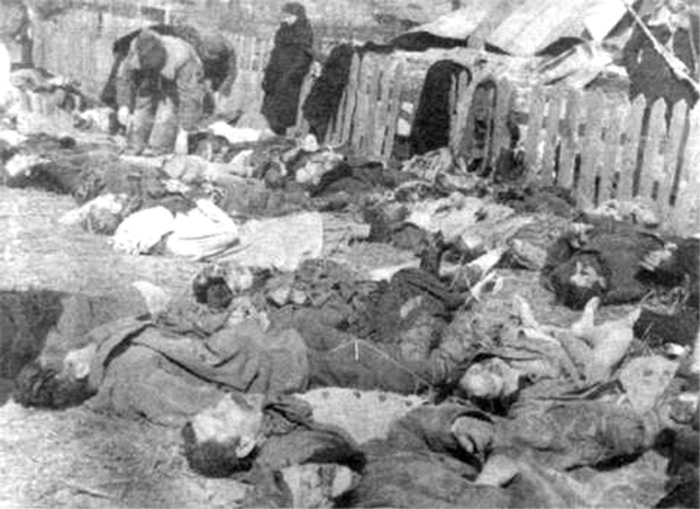Volhynian Massacre
The Volhynian massacres were anti-Polish genocidal ethnic cleansings conducted by Ukrainian nationalists. The massacres took place within Poland’s borders as of the outbreak of WWII, and not only in Volhynia, but also in other areas with a mixed Polish-Ukrainian population, especially the Lvov, Tarnopol, and Stanisławów voivodeships (that is, in Eastern Galicia), as well as in some voivodeships bordering on Volhynia (the western part of the Lublin Voivodeship and the northern part of the Polesie Voivodeship – see map). The time frame of these massacres was 1943−1945. The perpetrators were the Organization of Ukrainian Nationalists−Bandera faction (OUN-B) and its military wing, called the Ukrainian Insurgent Army (UPA). Their documents show that the planned extermination of the Polish population was called an “anti-Polish operation.”

The anti-Polish drive of the pro-Bandera Ukrainian underground during World War II, together with the subsequent Polish retaliation it largely spawned, undoubtedly mark the bloodiest period of the Polish-Ukrainian conflict in the 1940s. This conflict raged in territories which were within Poland’s interwar borders (basically, the country’s south-east), and which, taken as a whole, had nearly co-equal Polish and Ukrainian populations. We use the word “conflict” because there was obvious antagonism between Poles and Ukrainians, and they waged a fight for land – even though they had been citizens of the same state (the Second Republic of Poland, 1918-1939). “Conflict” is thus one of the terms used to describe what happened between Poles and Ukrainians during World War II.
Controverises about the Volhynian Massacres
The anti-Polish drive of the pro-Bandera Ukrainian underground during World War II, together with the subsequent Polish retaliation it largely spawned, undoubtedly mark the bloodiest period of the Polish-Ukrainian conflict in the 1940s. This conflict raged in territories which were within Poland’s interwar borders (basically, the country’s south-east), and which, taken as a whole, had nearly co-equal Polish and Ukrainian populations. We use the word “conflict” because there was obvious antagonism between Poles and Ukrainians, and they waged a fight for land – even though they had been citizens of the same state (the Second Republic of Poland, 1918-1939). “Conflict” is thus one of the terms used to describe what happened between Poles and Ukrainians during World War II. more
Criminal Investigations
Genocide is a legal category. The Volhynian massacres have all the traits of genocide listed in the 1948 UN Convention on the Prevention and Punishment of the Crime of Genocide, which defines genocide as an act “committed with intent to destroy, in whole or in part, a national, ethnical, racial or religious group, as such.” In Polish academia the Volhynian massacres are referred to as genocidal ethnic cleansings, the Volhynian (or Volhynian-Galician) slaughter, or, in legal terminology, the crime of genocide.
According to a range of testimonies, many Ukrainians helped their Polish neighbors whose lives were in danger.
That help assumed the following forms: warnings about attacks; showing an escape route during an attack; sheltering Poles before an expected attack; misleading the attackers; the provision of first aid to wounded Poles; the provision of food or clothing to survivors; taking care of orphans and children lost after attacks; helping to bury the victims; refusal to carry out an order to kill a Polish member of one’s own family; refusal to participate in an attack; public protest; sparing the lives of Poles; and the release of arrested Poles. Even though it is difficult to estimate the scale of this help, it was real. In 500 localities of the Eastern Borderlands examined in this regard (massacres occurred in over 4,000 localities) the OUN-UPA killed ca. 20,000 Poles. Ukrainian acts of solidarity and mercy saved both individuals and populations of entire villages (several thousand people in total). Over 1,300 Ukrainians are documented as having helped Poles to a lesser or greater extent. Ukrainian nationalists killed several hundred of the righteous as punishment, for all manifestations of friendliness toward Poles were regarded as acts of collaboration with the enemy and betrayal of national ideals, and that called for merciless revenge.